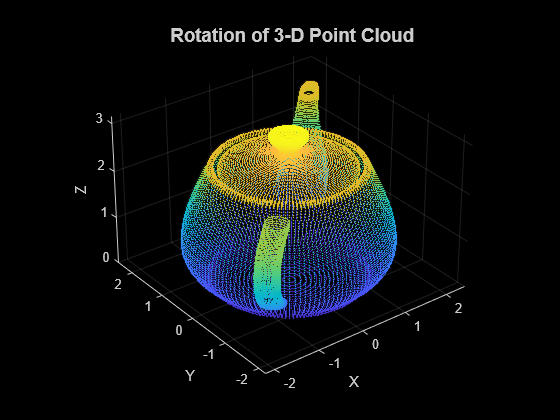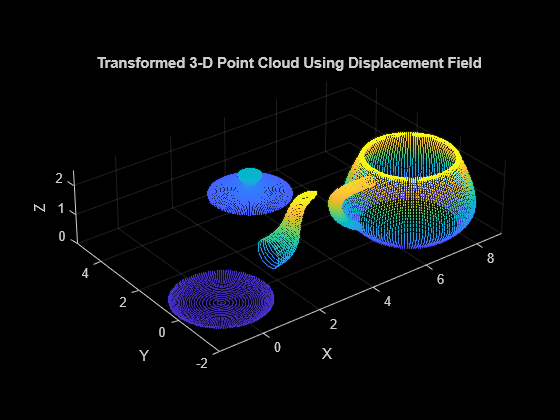pctransform
Transform 3-D point cloud
Description
ptCloudOut = pctransform(ptCloudIn,tform)tform to the
point cloud, ptCloudIn. The transformation can be a rigid,
similarity, or affine transformation.
ptCloudOut = pctransform(ptCloudIn,D)D to the point cloud. Point
cloud transformation using a displacement field define translations with respect
to each point in the point cloud.
Examples
Input Arguments
Output Arguments
Extended Capabilities
Version History
Introduced in R2015aSee Also
Objects
Functions
pcplayer|pcshow|pcwrite|pcread|pcmerge|pcdownsample|pcfitplane|pcdenoise|pcregistericp|pccat|pcalign






